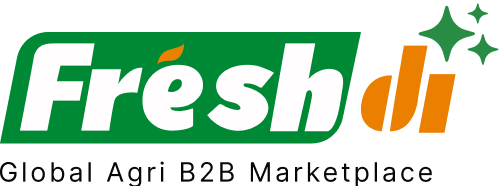Introduction – Current State of Play: The Rice Sector in Germany
The rice market in Germany is currently at a pivotal moment. As of July 3, 2025, a confluence of global and local developments is reshaping how rice is sourced, distributed, and consumed across the country. From shifting EU trade policies to evolving consumer preferences, businesses and buyers must stay agile to keep up with the rapidly changing environment.
One of the most influential developments is the EU-Mercosur Free Trade Agreement. While it opens the door to increased rice imports from South America, it has also sparked concern among European producers who fear being undercut by lower-cost imports. Germany’s stance leans toward liberalization, but France is pushing back, seeking protective measures for EU growers.
Germany is also pushing forward with bold biofuel reforms — aiming to halt the use of food-based biofuels by 2030. This move could redirect more grains, including rice, back into the food supply chain, potentially easing inflation and improving food security.
On the supply chain side, the effects of El Niño are being felt globally. With unpredictable weather patterns affecting yields in leading rice-exporting nations like India and Thailand, supply shocks remain a looming threat. Add to that the ongoing container shortages and rising freight costs, and you get a complex matrix of risks for rice importers in Germany.
Consumer behavior is also evolving. While consumption per capita remains stable at around 6 kg annually, there’s a clear rise in demand for organic, specialty, and ready-to-eat rice options. Germany, being Europe’s largest organic market, is leaning heavily into healthier, sustainable food products — especially among urban consumers.
Platforms like Freshdi are proving to be vital in this environment. Their real-time insights into RFQ (Request for Quote) trends, supplier verification, and dynamic supplier rankings help buyers make faster, smarter decisions amid uncertainty.
Deep Dive – What’s Making Headlines? Key Recent News & Impacts
Market Size and Latest Performance
Germany’s rice market clocked in at $175 million in 2024 — a surprising 18.6% decline following two consecutive years of growth. Despite this setback, the outlook remains optimistic. The market is projected to rebound sharply, hitting $667.33 million in 2025, and is expected to grow at a CAGR of 3.25% through 2030 (Statista).
This rebound is being driven by the health and wellness trend, particularly the rise of gluten-free diets and plant-based eating — both of which favor rice and rice-derived products.
Consumer Trends Shaping the Market
- Health-Conscious Choices: Red rice, wild rice, and rice protein are gaining traction as consumers seek functional, allergen-free, and nutrient-dense foods.
- Convenience is King: Ready-to-eat rice meals now dominate over 55% of the market — especially those in microwaveable pouches, which account for 52% of packaging types.
- Organic Growth: Germany’s position as Europe’s biggest organic food market is fueling demand for organic jasmine, basmati, and long-grain rice.
Supply Chain and Trade Dynamics
- Low Domestic Production: Germany produces very little rice locally. Imports are essential and currently under pressure due to international shipping constraints and rising freight costs.
- Shifting Trade Routes: With the U.S. increasing tariffs on red beaten rice exports, German importers are shifting focus to suppliers in India and Southeast Asia.
- India’s Role: India continues to be a dominant rice exporter, and its flexibility in trade terms gives it a competitive edge in these uncertain times.
Investment & Policy Updates
Germany’s 2025 federal budget includes a massive injection of public investment — targeted at infrastructure and the low-carbon transition. This includes:
- Tax incentives for agri-food and logistics investments.
- Support for digitization and automation of food supply chains.
- Focus on sustainability, aligning with EU-wide goals for resilient food systems.
These policies are designed to buffer the rice market against future shocks and make the supply chain more agile and responsive.
Top 5 Verified Rice Suppliers in Germany – Relevant in the Current Climate
Based on RFQ activity, buyer reviews, and export performance on platforms like Freshdi, here are the top-performing rice suppliers in Germany for Week 24 of 2025:
- Global Trade DE GmbH
- Specializes in Thai parboiled rice.
-
Known for bulk export capabilities and consistent quality.
- Offers a wide variety including organic jasmine and long-grain rice.
-
Strong buyer ratings for product diversity.
- Focuses on premium jasmine rice with 100% purity.
-
Excellent traceability and shipment tracking.
- Offers a wide rice portfolio: Sella Basmati, broken rice, brown rice.
-
Noted for competitive pricing and fast delivery.
- High-quality long-grain white rice.
- Preferred by B2B buyers for large-scale hospitality supply.
🔄 Dynamic Ranking Note: Supplier rankings on Freshdi are updated weekly based on real-time RFQ activity, buyer feedback, and shipment performance. Check their “Suppliers of the Month” feature for the latest updates.
Market Navigation – Strategic Responses to Today’s Rice Landscape in Germany
Given the current climate, businesses must adapt fast. Here’s what sourcing professionals need to consider:
- Diversify Supply Chains: Avoid over-dependence on a single country. India and Vietnam are stable but exploring new sources in Mercosur (e.g., Brazil, Argentina) could offer long-term cost advantages.
- Focus on Organic and Specialty: With Germany’s organic market booming, investing in certified organic rice options can provide a key differentiator.
- Pre-Negotiate Freight Agreements: Shipping costs remain volatile. Locking in freight contracts can help stabilize landed costs.
- Leverage B2B Platforms: Platforms like Freshdi offer real-time insights into trending RFQs, supplier performance, and even freight logistics — helping you make smarter sourcing decisions.
- Track Weather Patterns: Keep a close eye on El Niño updates. They directly affect harvests in Asia, which could influence pricing and availability.
Short term, expect continued growth in red rice and rice protein products. These categories align perfectly with Germany’s health-conscious and sustainability-focused market. Suppliers who can provide traceability, eco-friendly packaging, and flexible shipping terms will have an edge.
Conclusion – Key Takeaways for Businesses in a Rapidly Evolving Market
The rice market in Germany is no longer just about price — it’s about agility, health trends, and sustainability. From trade agreements and biofuel policies to climate disruptions and investment surges, every element is reshaping how rice is sourced, sold, and consumed.
Your next move as a buyer or distributor should be calculated and data-driven. Use platforms like Freshdi to:
- Access real-time RFQ shifts tied to global news.
- Connect with verified suppliers adapting to the latest market dynamics.
- Track supplier performance and manage risk better.
In a market this dynamic, those who stay informed and act fast will stay ahead.
✅ Checklist for Rice Buyers in Germany – July 2025 Edition
- [ ] Monitor impact of the EU-Mercosur deal on price and supply.
- [ ] Source organic and ready-to-eat rice to match consumer demand.
- [ ] Lock freight rates to avoid shipping cost spikes.
- [ ] Verify supplier certifications and logistics capabilities via Freshdi.
- [ ] Stay updated on El Niño forecasts and global trade policy shifts.
🔮 Future Outlook: What’s Next for Germany’s Rice Sector?
Looking ahead, we expect:
- A surge in rice protein and red rice demand.
- Increased supplier competition from South America.
- More digitization in B2B sourcing through AI-driven platforms.
- Greater transparency in sustainability and origin tracking.
The smart play? Don’t just chase price — chase value, agility, and verified partnerships.
📚 References
- Germany Rice Market Report – IndexBox
- Europe Wild Rice Market – Future Market Insights
- Germany Budget 2025 – BNP Paribas
- Statista Rice Market Forecast for Germany
- Red Beaten Rice Global Market Analysis
- Germany Rice Protein Market – Data Bridge
- Germany Red Rice Market – 6Wresearch
❓FAQs
1. Why has Germany’s rice market declined recently?
The market dipped in 2024 due to global logistics issues, rising costs, and flat domestic consumption. However, it’s rebounding strongly in 2025.
2. Which rice types are trending in Germany right now?
Organic jasmine, red rice, wild rice, and ready-to-eat packaged rice are particularly popular among health-conscious consumers.
3. What should importers watch out for in 2025?
Keep tabs on El Niño effects, EU trade policy changes, and new tariff structures that could shift supply dynamics.
4. Where can I find reliable rice suppliers in Germany?
Platforms like Freshdi provide verified supplier listings, RFQ trends, and buyer reviews to help you choose wisely.
5. Will the EU-Mercosur deal lower rice prices in Germany?
Potentially yes, but it depends on how the agreement is implemented and whether protective measures are added for EU producers.


